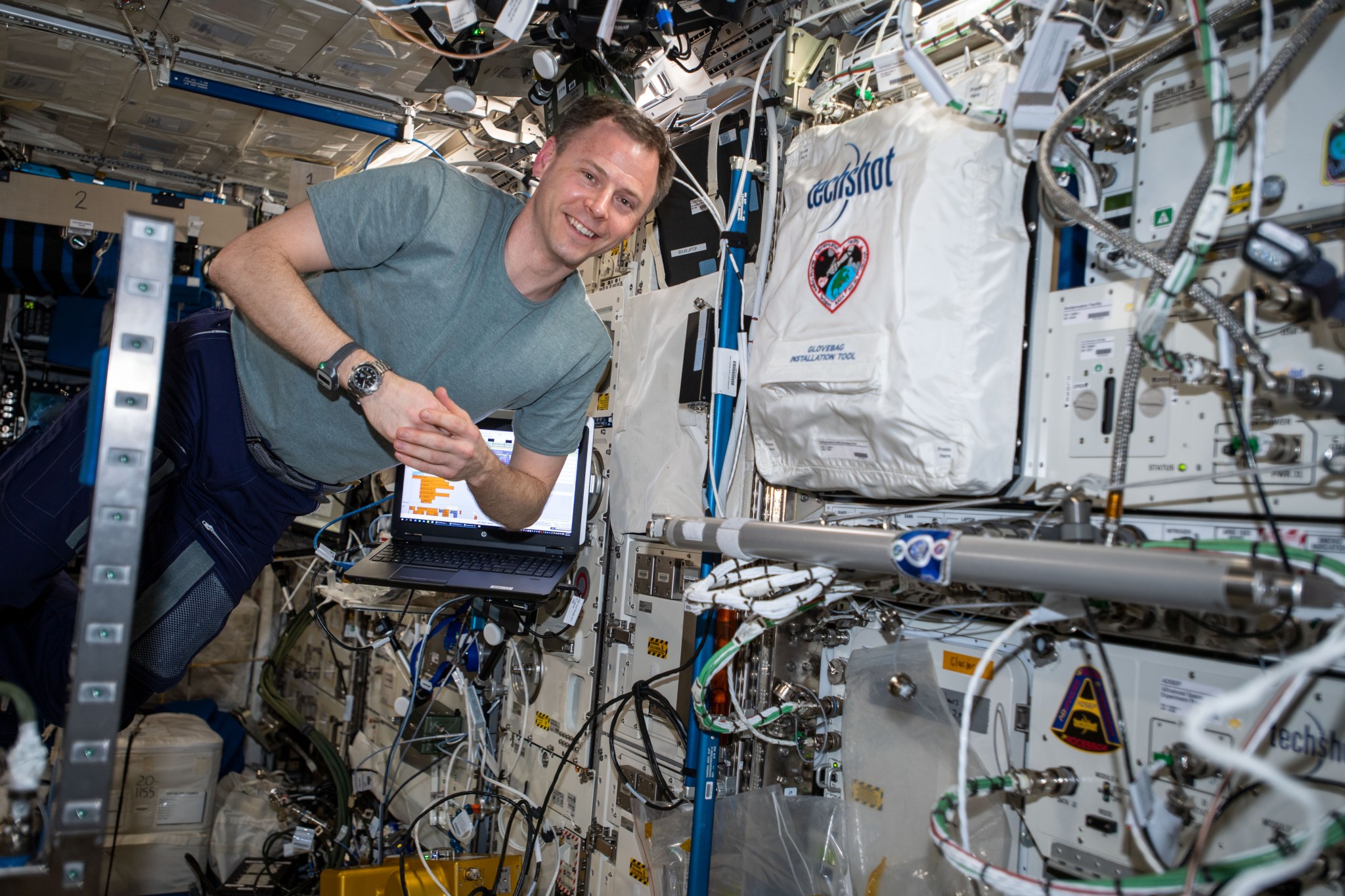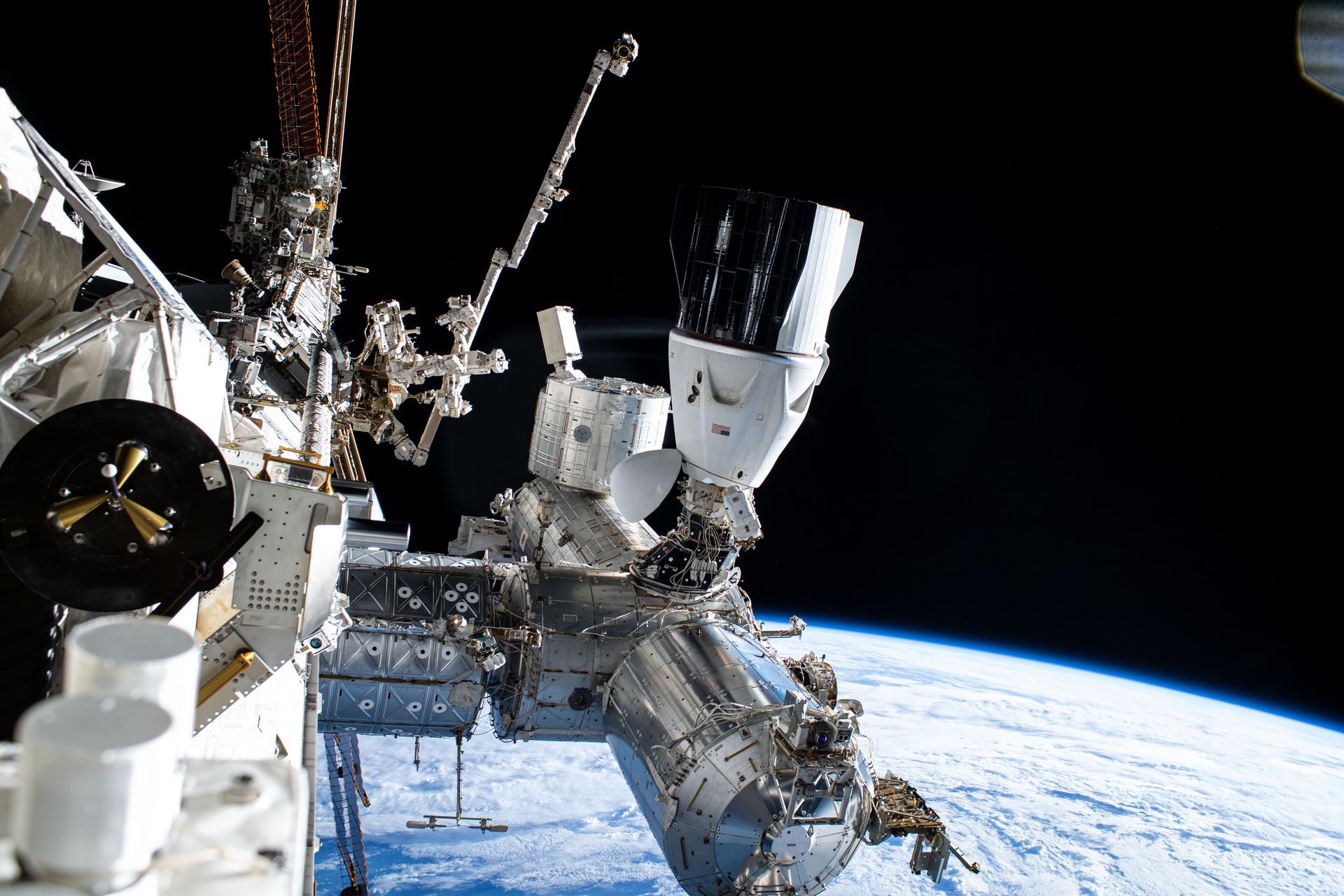Crew Works Robotics Competition and 3D Bioprinter to Manufacture Cells, Tissues
The Expedition 72 crew spent Tuesday setting up a free-flying robotics competition for students and a cleaning a 3D bioprinter. The International Space Station residents also conducted blood and saliva tests, cleaned crew quarters, and packed a cargo ship for departure.
Flight Engineer Don Pettit powered up an Astrobee robotic free flyer at the beginning of his shift on Tuesday and cleared space in the Kibo laboratory module to allow the toaster-sized device to maneuver on its own. Ground controllers then took over and tested Astrobee’s autonomous flight trajectories and its ability to recognize hand gestures. The operations are being set up in advance of the Astrobee-Zero Robotics competition that will see students write algorithms controlling Astrobee to clear objects inside Kibo in a set amount of time.
The BioFabrication Facility (BFF), located in the Columbus laboratory module, is being tested for its capability to print biological, or organ-like, tissues in space and eventually fabricate human organs off the Earth. NASA Flight Engineer Nick Hague spent his shift cleaning pumps, replacing components, and installing bio-ink syringes inside the BFF ensuring ongoing research operations. Print files are uploaded from the ground to the 3D bioprinter, then cells are printed inside a cassette, and finally the cassettes are stowed in a sample processor for 60 days before being returned to Earth for later analysis.
Hague also joined station Commander Suni Williams collecting their blood and saliva samples for testing. The duo processed the blood draws in a centrifuge then stowed the samples in a science freezer for later analysis. Researchers on Earth will examine the specimens to understand how living in weightlessness affects an astronaut’s health. Williams then spent the rest of her day charging batteries on an eye imaging tool, draining orbital plumbing systems, and analyzing station water samples for contaminants.
A Roscosmos Progress 89 cargo craft is due to depart the orbital lab on Feb. 25 after six months docked to the rear port of the Zvezda service module. Cosmonauts Alexey Ovchinin and Ivan Vagner packed the Progress 89 with trash and discarded gear and transferred fluids inside the resupply ship before it completes its mission. The Progress 91 cargo craft will replace the Progress 89 when it launches on Feb. 27 and docks to Zvezda’s vacated port two days later.
Cosmonaut and Flight Engineer Aleksandr Gorbunov began his shift powering down an Earth observation camera before inspecting and servicing electronic and ventilation systems inside the orbital outpost’s Roscosmos segment. Gorbunov had a light duty shift during his afternoon then wrapped up his day with a standard medical conference.
Learn more about station activities by following the space station blog, @space_station and @ISS_Research on X, as well as the ISS Facebook and ISS Instagram accounts.
Get the latest from NASA delivered every week. Subscribe here: www.nasa.gov/subscribe
Powered by WPeMatico
Mark A. Garcia








